
Slippery When Wet is the third studio album by American rock band Bon Jovi. It was released on August 18, 1986, by Mercury Records in North America and Vertigo Records internationally. It was produced by Bruce Fairbairn, with recording sessions between January and July 1986 at Little Mountain Sound Studios in Vancouver. The album features many of Bon Jovi's best-known songs, including "You Give Love a Bad Name", "Livin' on a Prayer", and "Wanted Dead or Alive".

New Jersey is the fourth studio album by American rock band Bon Jovi, released on September 19, 1988, by Mercury Records. The album was produced by Bruce Fairbairn and recorded at Little Mountain Sound Studios in Vancouver, British Columbia, Canada. The album was the follow-up to the band's third album, Slippery When Wet, and reached number one on the Billboard 200 chart in its second week of release after debuting at number eight. It remained at the top for four consecutive weeks and was Bon Jovi's last album to do so until Lost Highway (2007). The album was named after the birth state of Jon Bon Jovi, New Jersey.

Keep the Faith is the fifth studio album by American rock band Bon Jovi, released on November 3, 1992, by Mercury Records. It is Bon Jovi's last studio album to feature all five original band members as bass guitarist Alec John Such was dismissed from the band in 1994, though it was not his last release with the band. It is Bon Jovi's first album to not be produced by either Lance Quinn or Bruce Fairbairn. The album was produced by Bob Rock and was recorded at the Little Mountain Sound Studios in Vancouver, British Columbia. Keep the Faith marked a change to a "more serious interpretation of the band's pop-metal groove". It is also Bon Jovi's longest album to date, clocking in at 66 minutes.

Crush is the seventh studio album by American rock band Bon Jovi. It was released on June 13, 2000, by Island Records. It was produced by Jon Bon Jovi, Richie Sambora, and Luke Ebbin. The album marks the longest timespan between studio albums for the band, with five years between the release of These Days (1995) and this album. After the initial plan to team up with producer Bruce Fairbairn fell through because of his death a year earlier, Bon Jovi and Sambora hired Luke Ebbin to update their sound.

One Wild Night Live 1985–2001 is the first live album by the American rock band Bon Jovi, released on May 22, 2001. The album includes live covers of Neil Young's "Rockin' in the Free World" and performance of the Boomtown Rats' "I Don't Like Mondays", with a guest appearance by their lead singer Bob Geldof. The album charted at number 20 on the US Billboard 200 chart.

Bounce is the eighth studio album by American rock band Bon Jovi, released on October 8, 2002 through Island Records. Produced by Luke Ebbin, Jon Bon Jovi and Richie Sambora, the album was recorded at Sanctuary II Studio in New Jersey.
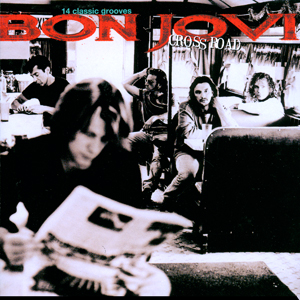
Cross Road is the first official greatest hits album by American rock band Bon Jovi, released on October 11, 1994, by Mercury Records. The album contains hits from all previously released albums from their debut, Bon Jovi (1984) to Keep the Faith (1992). The album also features two new tracks: the hit singles "Always" and "Someday I'll Be Saturday Night", as well as a new, updated rendition of "Livin' on a Prayer" entitled "Prayer '94" available only on the North American versions.

Have a Nice Day is the ninth studio album by American rock band Bon Jovi, released on September 20, 2005. Produced by John Shanks, the album was recorded at Sanctuary Sound II in New Jersey, and Ocean Way Recording in Hollywood, California.
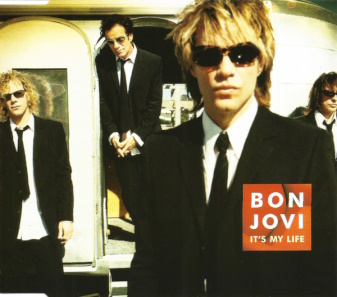
"It's My Life" is a song by American rock band Bon Jovi. It was released on May 8, 2000, as the lead single from their seventh studio album, Crush (2000). It was written by Jon Bon Jovi, Richie Sambora, and Max Martin, and co-produced by Luke Ebbin. The song peaked at number one in Austria, Flanders, Italy, the Netherlands, Portugal, Romania, Spain, and Switzerland while charting within the top 10 across several other countries and peaking at number 33 on the US Billboard Hot 100. "It's My Life" is Bon Jovi's most well-known post-1980s hit single and helped introduce the band to a new, younger fanbase.

"Livin' on a Prayer" is a song by the American rock band Bon Jovi, and is the band's second chart-topping single from their third album Slippery When Wet. Written by Jon Bon Jovi, Richie Sambora and Desmond Child, the single, released in late 1986, was well received at both rock and pop radio and its music video was given heavy rotation at MTV, giving the band their first No. 1 on the Billboard Mainstream Rock chart and their second consecutive No. 1 Billboard Hot 100 hit.
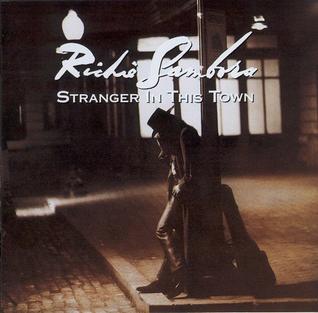
Stranger in This Town is the first solo studio album by Richie Sambora, the guitarist from the New Jersey band Bon Jovi. The album was released in 1991, while Bon Jovi was on a 17-month hiatus. Jon Bon Jovi also released a solo album, Blaze of Glory (1990), during this period.
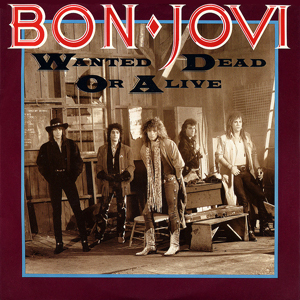
"Wanted Dead or Alive" is a power ballad by American band Bon Jovi. It is from their 1986 album Slippery When Wet. The song was written by Jon Bon Jovi and Richie Sambora and was released in 1987, as the album's third single. During a February 20, 2008 encore performance in Detroit, Jon Bon Jovi told the crowd about running into Bob Seger at a Pistons game. As he introduced his song "Wanted Dead or Alive", he said it was inspired by Seger's "Turn the Page" hit and called the song the band's anthem. The song peaked at number 7 on the Billboard Hot 100 chart and number 13 on the Mainstream Rock Tracks chart, making it the third single from the album to reach the Top 10 of the Hot 100. As a result, Slippery When Wet was the first glam metal album to have 3 top 10 hits on the Billboard Hot 100.

"I'll Be There for You" is a song by American rock band Bon Jovi, released as the third single from their 1988 album, New Jersey. The power ballad was written by Jon Bon Jovi and Richie Sambora. The single reached number one on the US Billboard Hot 100 and number five on the Album Rock Tracks chart.

"Keep the Faith" is a song by American rock band Bon Jovi. It was written by Jon Bon Jovi, Richie Sambora, and Desmond Child. It was released on October 7, 1992, as the lead single from Bon Jovi's fifth album, Keep the Faith (1992). It is characterized by its driving bass line and is a live staple for the band. "I Wish Everyday Could Be Like Christmas" appeared as a B-side to the song in the United States. In the US, the song reached number one on the Billboard Album Rock Tracks chart and peaked at number 29 on the Billboard Hot 100. Worldwide, "Keep the Faith" topped the charts of Norway and Portugal and reached number five in the United Kingdom.
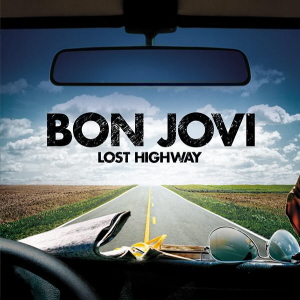
Lost Highway is the tenth studio album by American rock band Bon Jovi, released on June 19, 2007, in the US through Island Records. Produced by John Shanks and Dann Huff, the album was recorded at Black Bird Studios, Nashville and NGR Recording, Hollywood.

The Circle is the eleventh studio album by American rock band Bon Jovi. Released on November 10, 2009, the album was produced by John Shanks. The album debuted at number 1 in several countries, including the U.S., where it sold 163,000 copies in its first week.

Greatest Hits is a compilation album by American rock band Bon Jovi, released on October 29, 2010.

What About Now is the twelfth studio album by American rock band Bon Jovi. Produced by John Shanks, the album was released on March 8, 2013 in Australia and March 12, 2013 in the United States. The album was promoted throughout the band's 2013 Because We Can: The Tour. It is the last album to feature lead guitarist Richie Sambora before his departure from the band the following month.

Burning Bridges is the thirteenth studio album by American rock band Bon Jovi consisting of new songs, as well as formerly unreleased and unfinished songs. Released on August 21, 2015 by Mercury Records. Produced by John Shanks, it was the first release since the departure of former guitarist Richie Sambora in 2013, with Shanks handling the lead guitar parts. Burning Bridges is their last album to be released through Mercury, marking the end of their 32-year relationship with the label. According to Jon Bon Jovi, the album serves as a "fan record" to tie in with an accompanying international tour: "It's songs that weren't finished, that were finished, a couple of new ones like the one we released as a single 'We Don't Run'." Burning Bridges was followed by This House Is Not for Sale, the band's fourteenth studio album released in 2016 which featured all new songs.

This House Is Not for Sale is the fourteenth studio album by American rock band Bon Jovi. Released on November 4, 2016, by Island Records. It is their first studio album with Phil X on lead guitar after replacing founding member Richie Sambora in 2013, as well as the first album to feature bassist Hugh McDonald as an official member after having played with the band in a touring/session capacity since 1994.




















